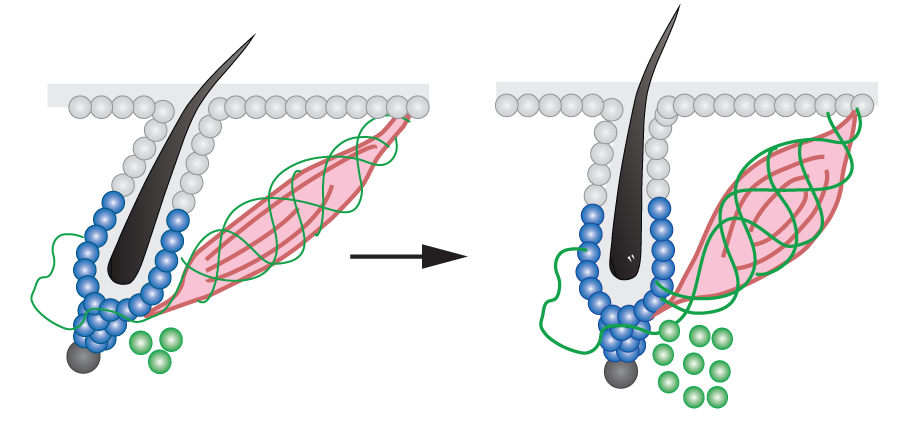Wallace Line - The Invisible Barrier

The Wallace Line, a faunal boundary line, serves as a dividing force between the biogeographical realms of Asia and Wallacea, a transitional zone bridging Asia and Australia. This demarcation is more than just a geographical marker; it represents a profound separation between two distinct ecosystems.
Discovery and Namesake
In 1859, British naturalist Alfred Russel Wallace first identified this phenomenon, and the line was subsequently named in his honor. Wallace's discovery shed light on the unique characteristics of the species inhabiting this region, sparking a deeper understanding of the intricate relationships within the natural world.
A Zone of Transition
Wallacea, the region bounded by the Wallace Line, is a melting pot of Asian and Australian species. This transitional zone is home to a diverse array of flora and fauna, shaped by the complex interactions between the two neighboring continents. The Wallace Line not only separates but also unites, creating a unique blend of biodiversity.
Unveiling the Secrets
As we delve into the mysteries of the Wallace Line, we begin to appreciate the intricate web of life that exists along this invisible barrier. By exploring the species that inhabit this region, we gain insight into the evolutionary processes that have shaped their development. The Wallace Line stands as a testament to the awe-inspiring complexity of the natural world.
Historical Context
The Wallace Line, a demarcation of profound biodiversity significance, has a rich and fascinating history that spans centuries. One of the earliest descriptions of the biodiversity in the Indo-Australian Archipelago dates back to 1521 by Venetian explorer Antonio Pigafetta, who accompanied Ferdinand Magellan on his monumental voyage. However, it was not until the 19th century that the region's unique biodiversity received the attention it deserved.
Wallace's Observations and Theories
Alfred Russel Wallace's groundbreaking travels in the region, which commenced in 1854, led to the development of the theory of evolution through natural selection. His meticulous observations and collections of various species, particularly birds and butterflies, revealed striking differences between the fauna of the Indo-Malayan and Austro-Malayan regions. These findings, presented in his seminal paper "On the Zoological Geography of the Malay Archipelago" (1859), laid the foundation for the concept of the Wallace Line.
A Legacy of Discovery
Wallace's work in the Indo-Australian Archipelago not only shed light on the region's remarkable biodiversity but also inspired future generations of naturalists, scientists, and explorers. His discoveries and theories continue to influence our understanding of evolutionary biology, biogeography, and conservation. As we continue to unravel the secrets of the Wallace Line, we honor the legacy of Alfred Russel Wallace and his tireless pursuit of knowledge.
Zoogeography and Biogeography
The Role of Wallace Line in Shaping Bird Species Distribution
The distributions of many bird species follow the limits of the line, since many birds do not cross even the shortest stretches of open water. This phenomenon highlights the significance of Wallace Line as a zoogeographical boundary that has influenced the dispersal and settlement patterns of avifauna in the region.
Unveiling the Secrets of Ancient Sea Levels and Continental Shelves
The understanding of the biogeography of the region centers on the relationship of ancient sea levels to the continental shelves. The fluctuations in sea levels have played a crucial role in shaping the geography of the area, thereby affecting the distribution of flora and fauna. By studying the correlation between sea levels and continental shelves, researchers can gain valuable insights into the historical events that have shaped the unique biodiversity of the region.
The Science Behind the Line
Unveiling the Forces that Shaped the Wallace Line
The Wallace Line, a pivotal concept in biogeography, is often misunderstood as a physical barrier. However, it is, in fact, a biogeographical boundary formed by the dynamic forces of plate tectonic movements and sea level changes. This boundary has had a profound impact on the distribution of species across the Indonesian archipelago.
A Boundary, Not a Barrier
The Wallace Line is not a physical obstacle, but rather a demarcation point where the species on either side of the line are distinct or related, depending on the group. This boundary has been shaped by the relentless forces of plate tectonics and sea level fluctuations, which have transformed the landscape over millions of years.
The Role of Plate Tectonics
Plate tectonic movements have played a crucial role in shaping the Wallace Line. The collision of the Eurasian and Australian plates has created a unique blend of species, as the two landmasses have exchanged species over time. This process has resulted in the formation of distinct faunal regions, with the Wallace Line marking the boundary between these regions.
Sea Level Changes and Their Impact
Sea level changes have also had a significant impact on the formation of the Wallace Line. During periods of low sea levels, land bridges have connected the islands, allowing species to migrate and colonize new areas. Conversely, high sea levels have isolated these islands, leading to the evolution of distinct species. The Wallace Line marks the point where these sea level changes have had the most significant impact on species distribution.
A Dynamic and Ever-Changing Boundary
The Wallace Line is not a static boundary but rather a dynamic and ever-changing demarcation point. As the forces of plate tectonics and sea level changes continue to shape the landscape, the boundary is constantly shifting. This dynamic nature of the Wallace Line has significant implications for our understanding of species distribution and evolution.
Conclusion
The Wallace Line, a seemingly invisible barrier, has long fascinated scientists and researchers alike. As we conclude our journey beyond the divide, it becomes evident that this concept remains a crucial aspect of understanding the biodiversity and evolution of species in the Indo-Australian Archipelago.
Unveiling the Significance
The Wallace Line's importance cannot be overstated. It has played a pivotal role in shaping the region's ecosystem, influencing the migration and adaptation of species, and ultimately, the evolution of new life forms. By grasping the underlying mechanisms of this divide, we can gain a deeper understanding of the intricate relationships within the natural world.
A Call for Further Exploration
Despite the progress made in understanding the Wallace Line, much remains to be uncovered. Further research and exploration are essential to unravel the secrets of this enigmatic barrier. By continuing to study and explore the region, scientists can refine their understanding of the complex interactions between species, habitats, and the environment.
Unlocking the Secrets
As we venture further into the unknown, we may uncover new species, ecosystems, and insights that challenge our current understanding. The Wallace Line's secrets await those willing to venture beyond the divide, pushing the boundaries of human knowledge and our appreciation for the natural world.















Comments ()